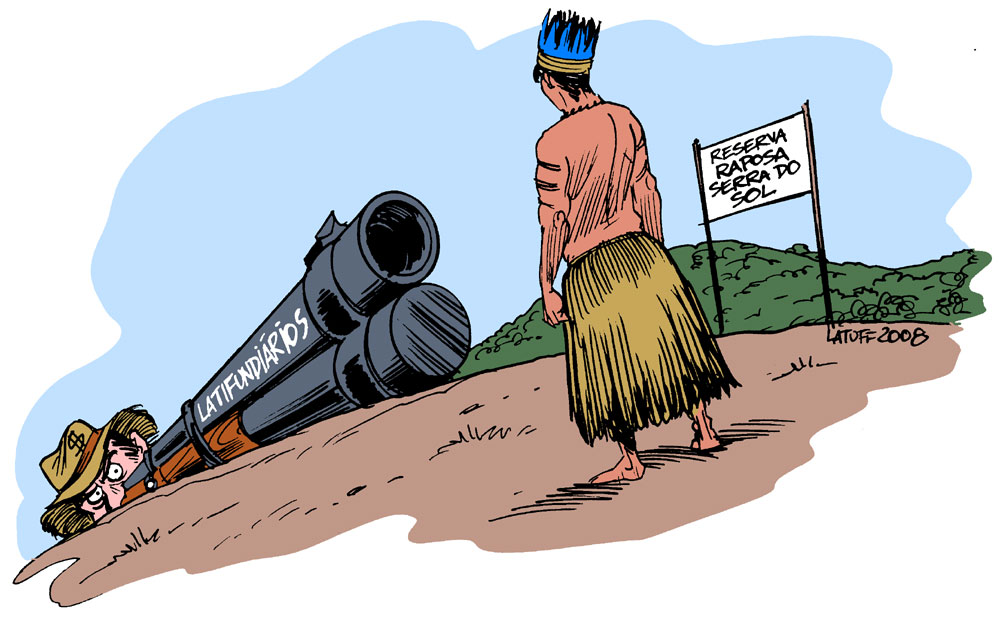An estimated 18,000 indigenous peoples from the Ingarico, Macuxi, Patamona, Taurpeng and Wapixana tribes live in the area known as Serra Raposa do Sol. The conflicts there intensified in 2005, when the government officially ratified the Raposa do Sol's current borders in the 4.2-million-acre reservation. The decree also ensured that the Armed Forces and the Federal Police should defend the territory. Since then, most ranchers and rice farmers have left the area, upon receipt of compensation from the government.
However, the demarcation process is being questioned by the Roraima State government which demands that it be reduced in size, claiming that 46 percent of the Roraima's territory is already in Indian hands, and a further extension to the indigenous reservation is an obstacle to the economic development of the state. Settlers have lived and cultivated the land for decades, since the first generation invaded the then non regularized Indigenous land. Despite the ratification, a small group of them refuse to leave and argue that they occupy just 1% or less of the land. Attempts to remove them were halted in April 2008, when violence broke out.
The government favors the indigenous peoples, but since the conflict began its indigenous policy has been widely criticized by many sectors of the population, including some military leaders. The decision is now in the hands of Brazil's Supreme Court, which is expected to decide this month whether the government should carry on the eviction of rice farmers or undo the demarcation of Raposa Serra do Sol's Indigenous land. There is some concern that if the Supreme Court decides on behalf of the rice farmers, it will set a precedent and other already demarcated and ratified indigenous lands may be equally questioned.


No comments:
Post a Comment